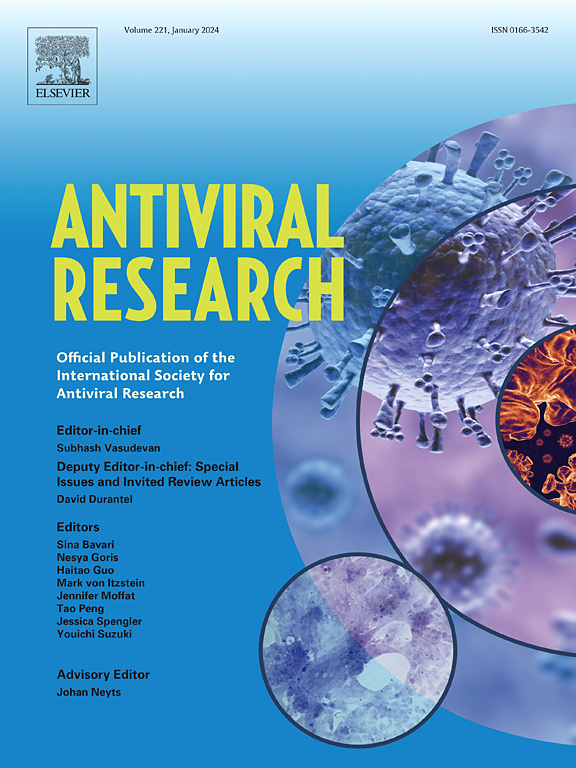在动物模型中,截断的轮状病毒VP4蛋白比P2 - VP8蛋白诱导更强的保护性免疫。
IF 4.5
2区 医学
Q1 PHARMACOLOGY & PHARMACY
引用次数: 0
摘要
A 组轮状病毒(RVA)是五岁以下儿童急性肠胃炎(AGE)的主要病原体,每年导致超过 12 万人死亡。在之前的研究中,我们发现截短的 VP4* 与 VP8* 和 VP5* 相比可能是更有前景的候选疫苗。本研究旨在比较 VP4* 和 P2-VP8 的免疫原性和保护效力,后者是目前正在小鼠、豚鼠、兔子和仔猪等各种动物模型中进行 3 期临床试验的最先进的重组轮状病毒疫苗。结果表明,与 P2-VP8 相比,VP4* 诱导的结合抗体和中和抗体水平明显更高。免疫 VP4* 可使小鼠在面对 EDIM 和 LLR 株系的挑战时获得 100% 的保护。此外,我们还欣喜地发现,VP4* 抗体不仅能抑制病毒吸附,还能阻止病毒在吸附前进入细胞。总之,与 P2-VP8 相比,VP4* 显示出更强的免疫原性和保护效力,使其成为更有希望的重组轮状病毒疫苗候选抗原。本文章由计算机程序翻译,如有差异,请以英文原文为准。
Truncated rotavirus VP4 proteins induce stronger protective immunity compared to P2 - VP8 in animal models
Group A rotavirus (RVA) is the primary causative agent of acute gastroenteritis (AGE) in children under five years of age, resulting in over 120,000 deaths annually. In previous studies, we identified truncated VP4∗ as a potentially more promising vaccine candidate compared to VP8∗ and VP5∗. This study aimed to compare the immunogenicity and protective efficacy of VP4∗ and P2-VP8, the most advanced recombinant rotavirus vaccine undergoing phase 3 clinical trial in various animal models, including mice, guinea pigs, rabbits, and piglets. The results indicated that the binding antibodies and neutralizing antibodies induced by VP4∗ were significantly higher levels compared to P2-VP8. Immunization with VP4∗ provided 100 % protection for mice against challenges with EDIM and LLR strains. Additionally, we were intrigued to discover that the VP4∗ antibody not only inhibited virus adsorption but also prevented the virus from entering cells following pre-adsorption. In summary, VP4∗ demonstrates greater immunogenicity and protective efficacy compared to P2-VP8, making it a more promising candidate antigen for recombinant rotavirus vaccines.
求助全文
通过发布文献求助,成功后即可免费获取论文全文。
去求助
来源期刊

Antiviral research
医学-病毒学
CiteScore
17.10
自引率
3.90%
发文量
157
审稿时长
34 days
期刊介绍:
Antiviral Research is a journal that focuses on various aspects of controlling viral infections in both humans and animals. It is a platform for publishing research reports, short communications, review articles, and commentaries. The journal covers a wide range of topics including antiviral drugs, antibodies, and host-response modifiers. These topics encompass their synthesis, in vitro and in vivo testing, as well as mechanisms of action. Additionally, the journal also publishes studies on the development of new or improved vaccines against viral infections in humans. It delves into assessing the safety of drugs and vaccines, tracking the evolution of drug or vaccine-resistant viruses, and developing effective countermeasures. Another area of interest includes the identification and validation of new drug targets. The journal further explores laboratory animal models of viral diseases, investigates the pathogenesis of viral diseases, and examines the mechanisms by which viruses avoid host immune responses.
 求助内容:
求助内容: 应助结果提醒方式:
应助结果提醒方式:


